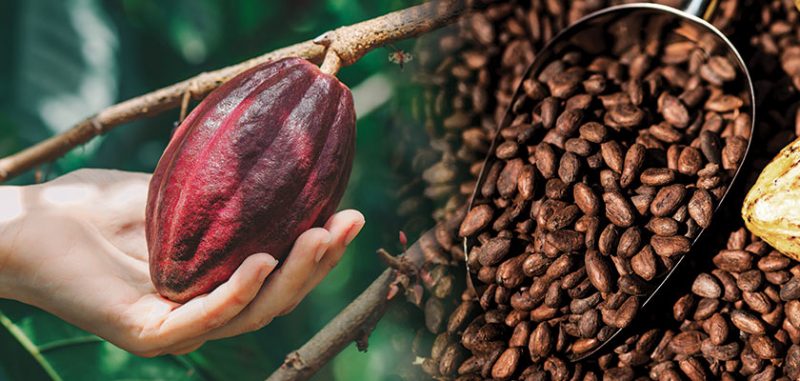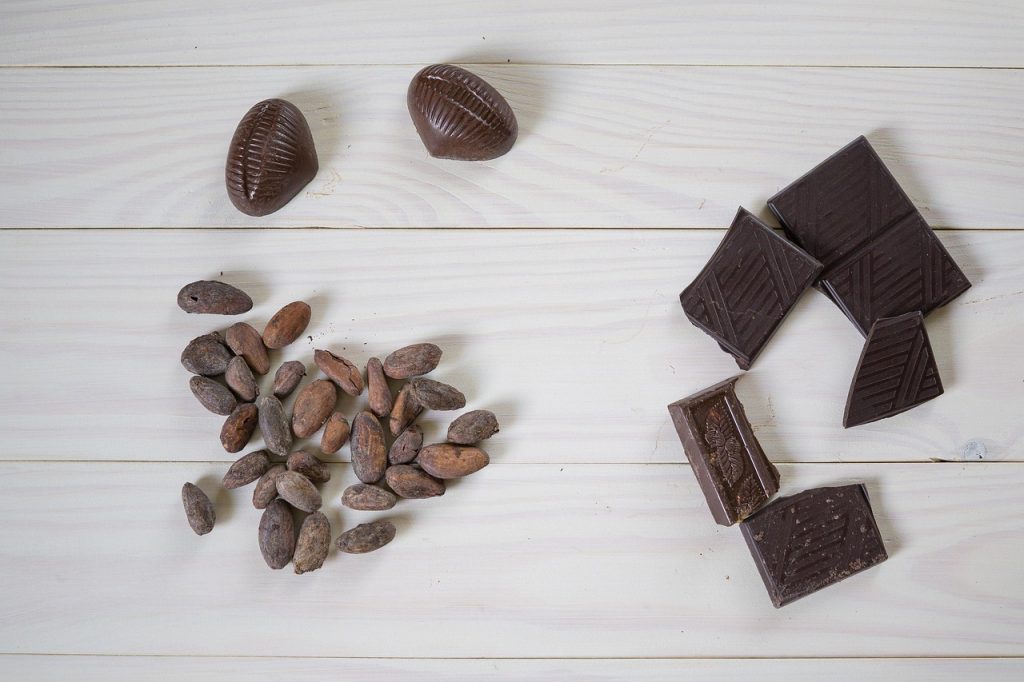Table of Contents
Over the centuries, the art of roasting cocoa powder has evolved, significantly influencing the taste and aroma of chocolate products. Anyone can explore how various roasting techniques alter the chemical composition of cocoa beans, resulting in a distinct flavor profile. They research into the science of temperature, duration, and humidity, shedding light on how each factor plays a role in creating the perfect cocoa powder. Understanding the process of roasting cocoa powder techniques not only elevates the chocolate-making process but also enriches the sensory experience for chocolate enthusiasts everywhere.
Understanding Cocoa Beans

Your journey into cocoa begins with an appreciation for the raw product: the cocoa bean. These beans, harvested from the cacao pod, are the foundation of all chocolate products and their unique characteristics heavily influence the final flavor profile. By understanding cocoa beans’ origins and types, enthusiasts and professionals alike can make informed decisions in the roasting process to unlock the desired flavors.
- Origins and Types
Any examination of cocoa beans must consider their origins and types, as these factors significantly influence taste and quality. Cocoa beans can be broadly categorized into three types: Criollo, Forastero, and Trinitario. Each type has distinct flavor notes and growing conditions.
- Criollo: Known for its refined flavors and lower yield.
- Forastero: Dominates the market due to its hardiness and higher yield.
- Trinitario: A hybrid that combines qualities of Criollo and Forastero.
Thou shall appreciate the diverse characteristics within each type, enriching the chocolate experience.
| Type | Flavor Profile |
| Criollo | Complex, fruity, and aromatic |
| Forastero | Bold, earthy, and bitter |
| Trinitario | Well-balanced, floral, and fruity |
| Usage | Gourmet chocolate and mass production |
- Chemical Composition
After understanding the physical attributes, the chemical composition of cocoa beans becomes vital in determining the flavor profiles they can produce. The beans comprise various compounds that contribute to their taste, aroma, and texture.
The unique chemical profile of cocoa beans includes flavonoids, alkaloids, and vital fats. Flavonoids offer antioxidant properties, while alkaloids such as theobromine influence bitterness. Additionally, the fat content contributes to mouthfeel, further enhancing the sensory experience of chocolate. Understanding these compounds helps individuals appreciate the depth of flavors produced during roasting, demonstrating the intricate connection between chemistry and chocolate making.
Roasting Cocoa Powder Techniques

Now that they understand the foundations of cocoa production, the focus shifts to the roasting process. This critical step transforms raw cocoa beans into flavorful, aromatic cocoa powder. The roasting process not only enhances the taste profile but also affects the color and overall quality of the final product. By manipulating various factors during roasting, he, she, or they can create cocoa powder with distinct flavor notes, tailored to specific culinary applications.
- Purpose of Roasting
Along with enriching the flavor, roasting serves several important purposes. It helps to develop the beans’ natural sweetness, reduces acidity, and eliminates unwanted moisture. This process also facilitates easier shell removal and helps in the extraction of cocoa butter, making it an vital step in cocoa processing.
- Roasting Temperatures and Times
Below is a table that outlines key roasting temperatures and times:
Roasting Temperatures and Times
| Temperature (°F) | Roasting Time (minutes) |
|---|---|
| 250 | 30-50 |
| 300 | 20-30 |
| 350 | 10-20 |
Further exploring the relationships between temperature and time reveals significant implications for flavor. Lower temperatures typically result in a milder, nuanced flavor profile, while higher temperatures can intensify chocolate notes and develop a richer taste. However, the time spent roasting also plays a vital role, as over-roasting risks bitterness and undesirable flavors. Achieving the right balance is vital for producing the desired cocoa powder quality.
Influence of Temperature and Time on Flavor
| Effect | Description |
|---|---|
| Flavor Development | Higher temperatures can enhance chocolate characteristics. |
| Acidity Reduction | Longer roasting can decrease acidity levels. |
| Bitterness | Excessive roasting time may lead to bitterness. |
Techniques of Roasting Cocoa

Any discussion of roasting techniques for cocoa powder must consider the significant impact these methods have on the final flavor profile. Different approaches, from traditional to modern innovations, can vastly alter the characteristics of the cocoa, influencing everything from bitterness to complexity. You need to explore into both time-tested practices and cutting-edge technologies, understanding how each contributes to the unique taste experiences that chocolate enthusiasts adore.
- Traditional Methods
To appreciate the nuanced flavors of cocoa, one must look at traditional roasting practices. These methods, often employed in small artisanal settings, rely on simple equipment and focused techniques that have been passed down through generations. He or she acknowledges that techniques such as dry roasting, indirect heat, and careful temperature control all contribute to the rich, deep flavors that characterize high-quality cocoa.
- Modern Innovations
Above the traditional approaches, the chocolate industry has embraced modern innovations in roasting techniques. Advanced machinery and technology allow for precise control over temperature, timing, and airflow, resulting in more consistent flavor profiles. They recognize that innovations such as continuous roasting systems and vacuum roasting are meriting attention for their ability to enhance and deepen flavor without compromising the cocoa’s natural qualities.
Cocoa roasting has seen considerable advancements with the introduction of new technologies that redefine the roasting process. These innovations enable roasters to achieve specific flavor notes by manipulating environmental factors, such as temperature gradients and atmospheric conditions, during the roasting. State that these techniques not only enhance flavor development but also improve efficiency and scalability, allowing chocolatiers to produce high-quality cocoa powder in larger quantities while maintaining the integrity of the cocoa’s taste. This blending of tradition and technology offers exciting possibilities for the future of chocolate flavor exploration.
Impact of Roasting on Flavor Development
All roasting processes significantly influence cocoa powder’s flavor profile. As heat is applied, biochemical reactions occur, transforming the raw cocoa beans and unlocking a spectrum of flavors. These reactions generate various compounds that can amplify notes like bitterness, sweetness, and acidity, leading to a complex flavor experience. Different roasting techniques and temperatures also impart unique characteristics, making the choices in the roasting phase pivotal for achieving the desired taste in chocolate products.
- Flavor Profiles
Above all, flavor profiles developed during cocoa roasting are influenced by the temperature and duration of the process. Light roasting typically enhances fruity or floral notes, while darker roasts emphasize earthy and nutty flavors. The balance between these elements is delicate, and skilled roasters often experiment to find the optimal roast that aligns with their desired final product, creating a wide array of taste sensations for chocolate lovers.
- Aroma Variations
Around the world, different roasting techniques yield unique aroma profiles that can captivate the senses. Each method unlocks specific compounds within the cocoa beans, resulting in delightful scents ranging from chocolatey and nutty to fruity and floral. These aromatic differences can significantly influence consumers’ perceptions and preferences when it comes to selecting cocoa products.
But the variations in aroma do not solely depend on the roasting duration and temperature; they are also affected by the origin of the cocoa beans, their fermentation process, and how they were stored prior to roasting. He or she would find that beans from distinct regions exhibit different flavor precursors influenced by local terroir, which can greatly enrich the sensory experience. Roasters diligently analyze these factors to achieve a harmonious aroma that complements the intended flavor profile and enhances overall enjoyment.
Regional Influences on Roasting
Despite the universal appeal of cocoa, regional influences significantly shape roasting techniques and flavors. Different regions often have their unique climate, soil, and agricultural practices, which in turn impact the intrinsic qualities of the cocoa beans. As such, the art of roasting is adapted to highlight or complement these regional characteristics, creating a diverse palette of flavors and aromas that reflect the cocoa’s origins.
- Cultural Practices
With each region comes distinct cultural practices that play a key role in roasting cocoa. These traditions often evolve from generations of knowledge passed down through families and communities, influencing how they approach the roasting process. For instance, some cultures may favor longer roasting times to develop deeper flavor notes, while others may utilize shorter roasting periods to preserve specific bean qualities.
- Local Preferences
Cultural preferences in flavor and aroma also shape how cocoa is roasted. Certain regions may have a historical affinity for sweeter cocoa profiles, while others might lean towards more robust and bitter notes. These local tastes can guide roasters in their approach, resulting in unique products tailored to their specific markets.
This regional focus on flavor preference means that when roasters develop their techniques, they often consider not only the characteristics of the beans but also the expectations of their audience. For example, in regions where consumers enjoy a bolder flavor, roasters may opt for darker, longer roasting methods, whereas in areas that appreciate subtler profiles, they might choose lighter roasts. As a result, local preferences significantly influence roasting practices and the final flavor profile of the cocoa products produced.
Practical Applications in Chocolate Making
Many chocolate makers are experimenting with various roasting techniques to enhance the sensory qualities of their products. The roasting process not only develops the rich flavors of cocoa powder but also influences the texture and color of the final chocolate. By understanding these applications, they can produce unique chocolate experiences that resonate with consumers. The balance between flavor complexity and aromatic nuances becomes a key factor in chocolate making.
- Industry Standards
The global chocolate industry adheres to specific standards when it comes to roasting cocoa beans, which influence taste, aroma, and overall quality. These standards often dictate the temperature and duration of roasting to ensure consistency across batches while maximizing flavor extraction. He and she in the industry often rely on these benchmarks to maintain product integrity and appeal to a broader market.
- Artisan Approaches
Above the established industry norms, artisans take a more experimental route in their roasting techniques to create distinctive chocolate flavors. They focus on small-batch production, allowing for greater control over the roasting parameters.
Artisan chocolate makers often engage in a dialogue with their ingredient sources, allowing for tailored roasting methods that highlight the unique characteristics of specific cocoa beans. By adjusting variables such as time, temperature, and even the atmosphere in which the beans are roasted, they can unlock a spectrum of flavors that reflect the bean’s origin. This personalized approach not only results in unique chocolates but also fosters a deeper connection between producers and consumers, elevating the overall appreciation for the craft of chocolate making.
To wrap up
Ultimately, they must recognize that the art of roasting cocoa powder is an intricate process that significantly alters flavor profiles. You should understand that varying temperatures and durations can lead to a diverse array of tastes, from bright and fruity to deep and complex. By mastering these techniques, they can elevate both the quality and uniqueness of their cocoa products, ensuring that the final flavor resonates with consumers’ preferences and enhances the overall chocolate experience.